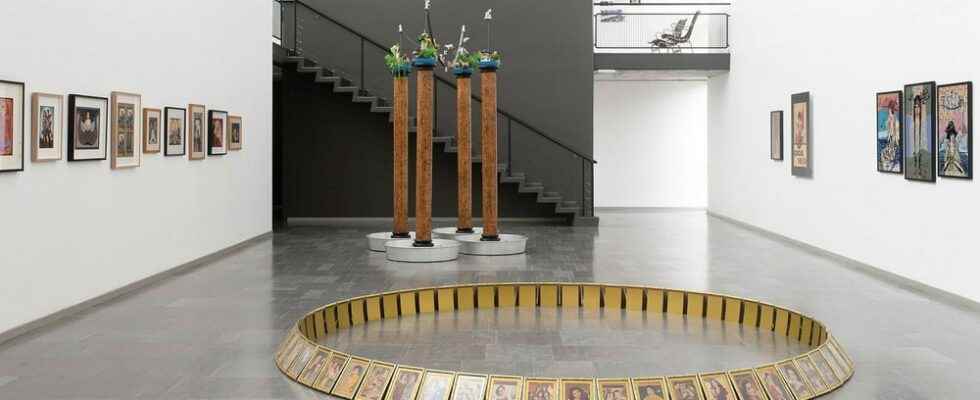Exhibition
“Gülsün Karamustafa: After the Cosmopolis”
Lund Art Gallery. Shown until 28/8
Show more
On May 1, 1977, thirty-six people were shot dead and two hundred wounded when the military opened fire on a demonstration in central Istanbul. On Gülsün Karamustafa’s poster, we see a bleeding worker lying stretched out on the ground while his mourning comrades hold the flag high.
It is about a classic agitation art – but with a violent political reality background that makes the revolutionary clichés seem almost documentary. Ever since the founding of the republic, the May Day celebrations had been banned in Turkey, and the 1977 massacre was the culmination of a brutal decade that ended with martial law and military coups. The second in ten years.
The event reappears several times as a reference point in Karamustafa’s early works and Lund Art Gallery’s highly interesting retrospective shows a wide selection of them. The strongest impression here is a series of “prison paintings” which in muted but pure colors depict everyday life in the political prison where the artist spent a year in the early seventies.
With its subdued realism and their melancholy light, they foreshadow in many ways the low-key, personal social critique that has now made Karamustafa one of Turkey’s most internationally successful artists.
In Karamustafa’s eclectic art, the Byzantine tradition meets the influences of folk art and commercial kitsch. One’s own life story is woven into political history.
The installation “Memories of a square” cross-cuts private photos with documentary photos from riots on Taksim Square in Istanbul. In “Stoic city”, four bare, lonely pillars are tied together with slack ropes where the plastic cattle balance over the abyss.
Exhibition title, “After the Cosmopolis”, of course, refers to the old Constantinople’s position as a metropolis, but also to modern Istanbul, which after the dictatorship seemed to be regaining a position as a cosmopolitan world city.
The national conservative winds of the last decade, however, have put an end to that kind of vision, and Karamustafa’s newer work oscillates between political grief and a quiet defiance, based on the fascination with the wealth that still lies in margins and gaps. Like the musical street children in the short film “The Stairs”, for example. Or the middle-aged women in “The City and the Secret Panther Fashion” who meet privately to – completely innocently – try on leopard-patterned clothes.
Gülsün Karamustafa stubbornly seeks out the revealing leaks, the cracks in the wall of time. In “Skåpet” an old dark brown dining room furniture spews up a multitude of cheap plastic toys and souvenirs. In the large video installation “Men who cry” film clips are sampled with, precisely, crying men. If there is hope, it is in silences that are broken, inhibitions that let go, facades that crackle. All that breaks the alignment and control. All that indomitable human.
